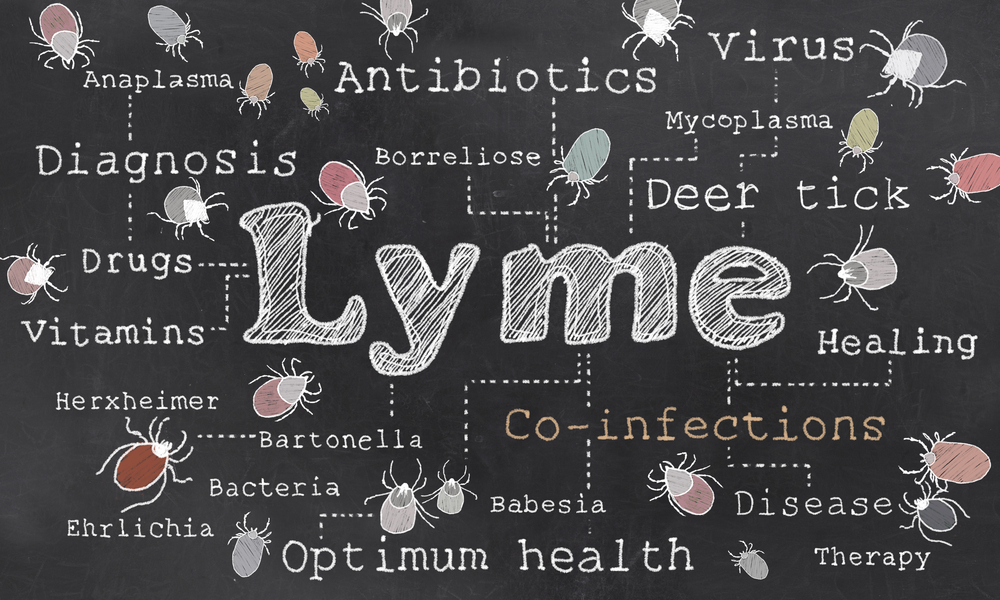As temperatures rise, the ticks come swarming—bringing with them a surge of new articles about Lyme disease. While we are glad to see the media shine a spotlight on this terrible illness, we are concerned about posts that spread misinformation that could increase someone’s risk of getting a tick-borne infection. One such article is “Lyme Disease: What You Need to Know” by Mountainside Medical Center, which makes a good-faith effort to cover the facts, but falls prey to some missteps.
1. Downplaying the Danger
Starting in the article’s subtitle, the piece describes ticks as “relatively harmless,” which may lull readers into a false sense of security. In fact, ticks can carry multiple infections that, if left unaddressed, can wreak havoc on a person’s health and life. The comment that “Connecticut and parts of New Jersey and New York have high rates of ticks carrying Lyme disease” ignores the fact that ticks have continued to expand their geographic reach, and you can get Lyme just about anywhere.
Finally, the article states that “although Lyme disease can turn into a very serious illness, treatment can be effective in most cases.” This dismisses the risk of Lyme symptoms persisting, which a mountain of research proves.
2. Transmission Time
This article asserts that “infected ticks need to be attached for more than a day to transmit the infection,” which is a widespread myth. In reality, no one knows the minimum time it takes for Lyme to be transmitted by a tick bite. And in fact, certain circumstances can make the transmission time even shorter. For example, a tick that has already partially fed on another host is likely to have Borrelia burgdorferi spirochetes swimming in its mouthparts and salivary glands, making more efficient transmission likely on a second bite. Also, if you accidentally squeeze the tick while attempting to remove it, more spirochetes may be unintentionally released into your body, increasing the risk and transmission time.
3. Inaccuracy of Lyme Tests
The article makes a number of false claims about Lyme tests, including that “your doctor can run tests to confirm a diagnosis,” and “if the results of the first test are negative, the patient will not need the second test.” As our community knows all too well, Lyme tests are notoriously inaccurate and insensitive, particularly during the early stage when it is critical to get an accurate diagnosis. According to a new study published in the Journal of Clinical Microbiology, even among patients who presented with the classic bull’s-eye rash, the CDC’s standard two-tier testing algorithm for Lyme disease (STTTA) failed to correctly diagnose 71% of blood tests. Those who are new to the Lyme world especially need to be aware that it’s not always easy to get the right diagnosis—and it’s not unusual for the tests to be wrong.
4. Misleading Treatment Guidelines
According to the article, “Patients typically take doxycycline for 10 days to two weeks or amoxicillin and cefuroxime for two to three weeks.” While these numbers are in line with the CDC’s recommendations, they fail to take into account evidence-based guidelines from the International Lyme and Associated Diseases Society (ILADS). To be safe, ILADS recommends 4-6 weeks of doxycycline, amoxicillin, or cefuroxime. (In Europe, patients may take a minimum of 21 days of azithromycin.) Then the patient should be reassessed by their Lyme doctor.
The article also falsely claims, “There is also a one-dose preventive treatment which is most effective if started within 72-hours of a known tick bite.” Let’s stop you right there—one pill is not going to protect you against tick-borne diseases. Ultimately, ILADS advises patients against this single 200 mg dose of doxycycline, as research has shown it to be ineffective.
5. Acute Versus Chronic Lyme
Perhaps most controversial of all is the article’s declaration that “about 90% of people are cured of Lyme disease with treatment.” This gets to the heart of one of our community’s greatest concerns, because this statistic only applies to cases of Lyme disease which are caught right away, and it skews public perception of just how many people recover easily from Lyme disease. In truth, up to 20% of patients fail treatment even after early diagnosis and treatment done in accordance with IDSA guidelines, and more crucially, a vast number of cases are not diagnosed or are misdiagnosed at first. This results in a huge number of the Lyme population who wind up getting treated late and struggling with persistent symptoms and the kind of permanent damage a longstanding infection can do.
As many of our readers know, the journey to healing from Lyme and other tick-borne diseases takes many twists and turns and can last years or even decades for some. As long as readers keep a watch out for false information and share what they learn with our community, articles like “Lyme Disease: What You Need to Know” can be a valuable way to spread awareness about the hazards of tick-borne infections to people who might not otherwise know about it.
Until next time, stay safe!



